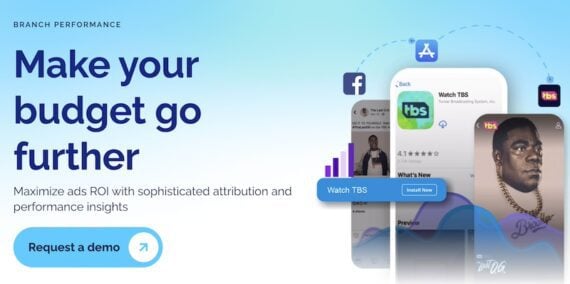Four years after Apple broke mobile app attribution in iOS 14.5, an emerging class of privacy-safe aggregated modeling tools promises to bring back visibility without tracking individuals.
The approach uses large sets of anonymized data to infer which advertising campaigns, mobile views, and cross-device activity led to revenue.
It is the method behind Apple’s SKAdNetwork, Google’s Integrated Conversion Measurement (ICM), Meta’s Aggregated Event Measurement (AEM), and tools such as Predictive Aggregate Measurement (PAM) from Branch, a marketing and measurement firm.
“Marketers don’t need to know who bought something — they need to know what drove the sale,” said Irina Bukatik, vice president of product at Branch. “Predictive Aggregate Measurement gives them that clarity in a way that’s compliant, privacy-safe, and works across both app and web.”
Why It Matters
Merchants that sell through multiple channels — mobile app, website, physical store — know the importance of understanding advertising’s impact on sales.
Apple’s iOS changes in 2021 created blind spots, especially for tracking users across devices and channels.
PAM, AEM, ICM, and similar systems close that attribution gap. These privacy-preserving tools analyze large datasets and estimate which ads and touchpoints are likely responsible for conversions. Thus marketers can tell if a mobile view influenced a desktop purchase or if an app install led to repeat orders, all without violating privacy.
The payoff is relatively better budget allocation, campaign optimization, and confidence that ad spend is going to the channels that generate revenue.
How It Works
Instead of capturing click-by-click records tied to a shopper, these privacy-compliant systems collect conversion signals in bulk and combine them with other relevant campaign data.
The tools do not track individuals, and some add “noise” to obscure personally identifiable information.
From there, statistical models look for patterns that suggest which ads, channels, or touchpoints are likely responsible for a sale.
The process is probabilistic, meaning the tool does not know that a specific customer saw an Instagram ad before buying, but it can conclude, with a high degree of confidence, that the campaign influenced sales based on aggregate trends, explained Branch’s Bukatik.
The models weigh several factors, presumably including:
- Time between impressions and actions,
- Number of conversions following a campaign,
- Cross-device behaviors such as mobile views and desktop purchases,
- Historical campaign performance under similar conditions.
Imagine the old connect-the-dot worksheets from elementary school that let you trace the shape of a cat or a butterfly. iOS 14.5 and similar privacy updates erased some of the dots, but higher math can help complete the picture.
Known Limits
Yet aggregated measurement is not a perfect replacement for the old, detailed, user-level tracking.
There are limits to the new systems’ accuracy.
- Lower granularity. The tools lack the user-level detail of legacy tracking. Marketers cannot follow individual customer journeys end-to-end, complicating targeted, retargeted, or personalized campaigns.
- Attribution delays. Frameworks such as Apple’s SKAdNetwork often delay reporting for privacy reasons. The result is slow optimization cycles, forcing marketing teams to wait before reallocating budget or testing new creative.
- Thresholding. Some systems hide conversion data from smaller or niche campaigns until they reach a minimum volume to prevent identification. This too delays budget and creative decisions.
Limitations such as lower granularity are not as critical as they first appear. As Bukatik noted, in most cases “what a marketer wants to know is not whether someone clicked on the Facebook ad and purchased — it’s whether the Facebook ad drove the purchase.”
Adapting
For merchants, the continuing shift toward privacy-preserving aggregated measurement means building campaigns and reporting processes that work within the system’s constraints.
Start by focusing on bigger, more meaningful signals. Instead of chasing granular, click-by-click attribution across devices, set clear conversion events that matter, such as a first purchase, a new subscription, or a repeat order.
Consider these metrics as key performance indicators. Aggregated tools excel at gauging high-value actions.
Invest in creative and audience testing at the campaign level. A delay in reporting may require tests that run long enough to gather statistically significant results. Avoid overreacting to early data.
Blend first-party data from your ecommerce platform or loyalty program with aggregate reports. You won’t see individual journeys from ad click to checkout, but combining datasets can reveal channel lift, customer lifetime value, and repeat purchase behavior.
Finally, accept that modern attribution is increasingly probabilistic. The goal isn’t perfect precision but directional confidence — enough clarity to shift budget toward the channels, campaigns, and platforms likely to generate profitable growth.









